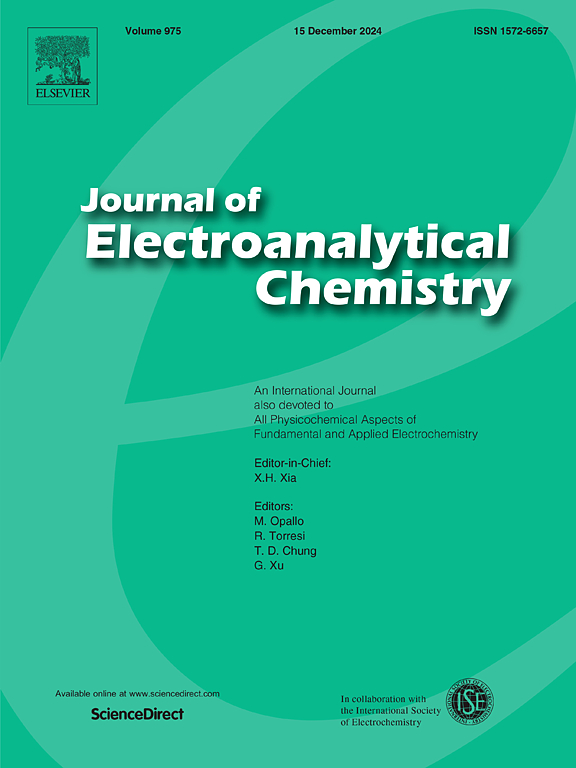Selectivity and activity trends of single-phase copper-tin foam electrocatalysts in CO2 electroreduction reaction
IF 4.1
3区 化学
Q1 CHEMISTRY, ANALYTICAL
引用次数: 0
Abstract
The quest for active, selective, and stable electrocatalysts to convert CO2 into valuable products like carbon monoxide and formate has garnered significant attention in recent years, driven by both fundamental research and practical applications. Recent findings on copper-tin electrocatalysts reveal an intriguing shift in selectivity of CO2 reduction − from producing CO at low Sn concentrations to generating formate with nearly unity selectivity when the Sn content is increased. This shift raises important questions about the factors influencing the dramatic changes in CO2 reduction product distribution as the Cu-Sn material composition varies. However, existing experimental data primarily derive from multiphase Cu-Sn materials, which typically undergo phase changes under CO2 reduction conditions, which introduces interpretation uncertainties. In this study, we developed stable single-phase Cu-Sn materials, specifically a tin solid solution in Cu with the composition of Cu97Sn3 and the intermetallic Cu6Sn5, which were fabricated as dispersed foams to facilitate kinetic measurements. Our findings indicate that the high activity and selectivity of the Cu-Sn solid solution in the CO2-to-CO conversion process are likely due to more favorable kinetics for the formation of the *COOH intermediate, and not due to easier carbon monoxide desorption, as was previously suggested. In contrast, the formate production kinetics for the HCOO-selective Cu6Sn5 phase are significantly inhibited compared to pure copper. We hope our results will motivate further investigation into the nature of the active sites in Cu-Sn electrocatalysts, providing a deeper mechanistic understanding of the observed selectivity/activity trends.
求助全文
约1分钟内获得全文
求助全文
来源期刊
CiteScore
7.80
自引率
6.70%
发文量
912
审稿时长
2.4 months
期刊介绍:
The Journal of Electroanalytical Chemistry is the foremost international journal devoted to the interdisciplinary subject of electrochemistry in all its aspects, theoretical as well as applied.
Electrochemistry is a wide ranging area that is in a state of continuous evolution. Rather than compiling a long list of topics covered by the Journal, the editors would like to draw particular attention to the key issues of novelty, topicality and quality. Papers should present new and interesting electrochemical science in a way that is accessible to the reader. The presentation and discussion should be at a level that is consistent with the international status of the Journal. Reports describing the application of well-established techniques to problems that are essentially technical will not be accepted. Similarly, papers that report observations but fail to provide adequate interpretation will be rejected by the Editors. Papers dealing with technical electrochemistry should be submitted to other specialist journals unless the authors can show that their work provides substantially new insights into electrochemical processes.

 求助内容:
求助内容: 应助结果提醒方式:
应助结果提醒方式:


